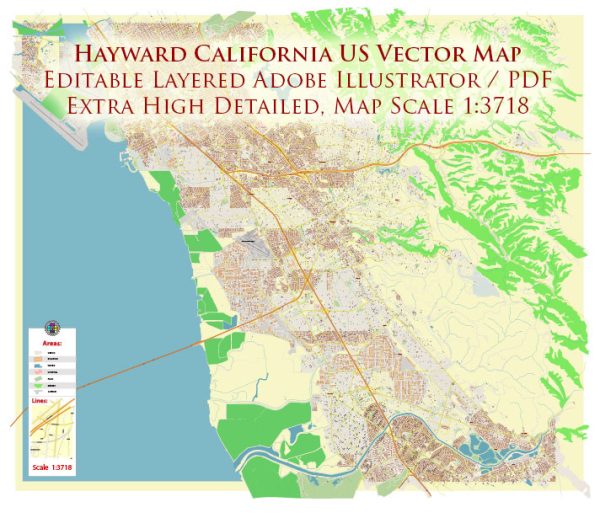Hayward, California, has a rich history of urban development that reflects the broader trends and changes in the region and the United States. Here is a brief overview of the history of urban development in Hayward:
- Early Settlement and Agricultural Era (pre-19th century to late 19th century): Before becoming a city, the Hayward area was inhabited by Native American Ohlone people. Spanish explorers arrived in the late 18th century, and the land eventually became part of a Mexican land grant called Rancho San Lorenzo. During the mid-19th century, with the California Gold Rush, the region experienced an influx of settlers. Agriculture, particularly farming and ranching, became the primary economic activities.
- Transcontinental Railroad (1869): The completion of the First Transcontinental Railroad in 1869 had a significant impact on the development of Hayward. The railroad facilitated transportation and trade, making the region more accessible and attractive for settlement and business.
- Incorporation as a City (1876): Hayward was officially incorporated as a city in 1876. During this period, the city saw the establishment of businesses, schools, and public services.
- Agricultural Economy (Late 19th century to mid-20th century): Hayward continued to thrive agriculturally, with industries such as dairy farming, fruit orchards, and vegetable cultivation dominating the local economy.
- Post-World War II Growth (1940s-1960s): Like many other areas in the United States, Hayward experienced significant population growth and urban development after World War II. The demand for housing increased, leading to suburbanization and the development of residential neighborhoods.
- Industrialization and Commercial Development (1960s-1980s): The city’s landscape changed as industries and commercial developments expanded. Hayward became a hub for manufacturing, and shopping centers and business districts emerged.
- Diversity and Demographic Changes: Hayward has long been known for its diverse population. Over the years, the city has welcomed people from various cultural backgrounds, contributing to its vibrant community.
- Infrastructure and Public Services: The city has continuously invested in infrastructure and public services to meet the needs of its growing population. This includes the development of schools, parks, and transportation systems.
- Environmental Considerations: In recent decades, there has been an increased focus on environmental sustainability and responsible urban development. This includes efforts to preserve green spaces, improve public transportation, and enhance the overall livability of the city.
- Present Day: Today, Hayward is a bustling city with a mix of residential, commercial, and industrial areas. It continues to evolve as it addresses contemporary challenges and opportunities in urban development.
Understanding Hayward’s history provides insight into the factors that have shaped the city and contributed to its present-day character.


 Author: Kirill Shrayber, Ph.D.
Author: Kirill Shrayber, Ph.D.